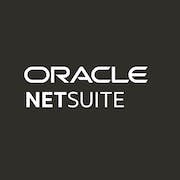Are you looking for the best accounts receivable software? Our comprehensive buyer's guide has everything you need to know to make the right choice. Explore features, benefits and more.
Managing accounts receivable can be a daunting task, especially for businesses dealing with large volumes of transactions. With customers taking longer to pay their bills, the cash flow of the business can take a hit, making it difficult to manage other crucial expenses. However, with the help of accounts receivable software, businesses can now streamline their invoicing and payment collection processes, ensuring that they receive payments on time and maintain a steady cash flow. In this buyer's guide, we'll take a closer look at accounts receivable software, its benefits, and what to consider when choosing the right one for your business. Whether you are a small business owner or a seasoned accounting professional, this guide has got you covered.
What is an accounts receivable system?
Accounts receivable (AR) software is an essential tool for businesses to manage their finances. It allows companies to track and manage customer payments, issue invoices, and follow up on overdue payments. This solution automates the invoicing and payment tracking process, streamlining operations and enabling companies to focus on core business functions.
AR technology is crucial for companies that need to manage their cash flow and ensure that they get paid promptly and accurately. Interestingly, businesses of all sizes and industries use this tool to manage their finances, as it is an essential part of their collections and billing processes. Some of the most common use cases of this system include:
- Invoicing: It automates the invoicing process, allowing companies to create and send invoices to their customers quickly and effortlessly. A Pay streak advisors survey reports that 85% of AR and credit respondents believe that electronic invoicing expedite the collections process.
- Payment tracking: An AR solution tracks customer payments, providing businesses with real-time information on outstanding payments and overdue accounts.
- Reminders and collections: Thesoftware sends reminders to customers for overdue payments and helps businesses to manage the collections process.
- Analytics and reporting: It provides companies with insights into their cash flow and financial health, allowing them to make informed decisions.
AR software is especially beneficial for companies that manage a high volume of transactions or have multiple clients with varying payment terms. It is commonly used by businesses such as law firms, consulting firms, healthcare providers, and retail businesses, among others.
What are the benefits of investing in an accounts receivable solution?
As a business owner, managing your finances is one of the most crucial aspects of your operations. It involves keeping track of the money your clients and customers owe you, and ensuring that you receive payment in a timely manner. Here are the main benefits of using accounts receivable software for your business:
- Improved cash flow: By keeping an accurate and updated record of your outstanding invoices, you can ensure that you receive payment on time and keep your cash flow steady.
- Increased efficiency: Automation of the accounts receivable process prevents errors and reduces the amount of time and effort you spend managing your invoice tracking and payment receipt process.
- Better customer service: With automated reminders, your customers are prompted to make payments, reducing the chances of disputes, increasing customer satisfaction, and strengthening customer relationships.
- Enhanced financial forecasting: With comprehensive reports and analytics, you can make informed financial decisions that will help grow your business.
- Increases accuracy: Automated invoicing and billing can help reduce errors and improve accuracy, ensuring that you are billing your customers for the right amount.
- Saves time: Automating the invoicing process reduces time-consuming manual tasks, meaning that your staff has more time to focus on other important areas of your business. Accounts receivable software offers automation for invoice management, collections, and payment tracking, leading to an 85% reduction in manual processing and lower operational costs.
10 key features of accounts receivable software
An AR program provides an easy way to track and manage customer payments, making it an invaluable resource for any organization. Here are 10 common features that can help you manage your finances more effectively:
1. Automated invoicing:
One of the key benefits of an accounts receivable platform is that it automates the invoicing process, making it more efficient and accurate. You can schedule invoices to be sent automatically at regular intervals, and customize them to include your branding and payment terms.
2. Payment tracking:
The solution allows you to track customer payments in real-time, which can help you stay on top of your cash flow and avoid any late payments. You can also set up alerts to remind customers about upcoming payments and follow up on overdue invoices.
3. Payment processing:
Most AR software solutions include payment processing capabilities, allowing you to accept payments online through credit cards, debit cards, or other payment methods. This can help you get paid faster and reduce the risk of fraud or errors.
4. Customer management:
With this technology, you can manage all your customer information in one place, including contact details, payment history, and credit limits. This can help you quickly identify any issues or opportunities for growth.
5. Reports and analytics:
It provides detailed reports and analytics that give you insight into your business's financial health. You can track metrics like revenue, outstanding balances, and aging reports to make informed decisions about your cash flow and future investments.
6. Integration with accounting software:
Many AR solutions integrate with popular accounting systems like QuickBooks, Xero, or Sage. This can help you streamline your financial management and reduce the risk of errors or duplication of efforts.
7. Customizable templates:
AR technology usually comes with a range of customizable templates for invoices, payment receipts, and other financial documents. You can customize these templates with your branding and payment terms to create a professional look that reflects your business's values.
8. Multi-currency support:
If you do business with customers around the world, a multi-currency feature in your AR software is essential. It allows you to create and send invoices in different currencies, making it easier for your customers to pay you and for you to manage your finances across borders.
9. User permissions:
An accounts receivable application provides different levels of user permissions, allowing you to control who has access to sensitive financial information. You can set up custom roles for your team members and restrict access to specific features or reports.
10. Cloud-based access:
With cloud-based AR software, you can access your financial information from anywhere, at any time. This provides real-time insight into your business's financials and helps you make informed decisions on the go.
Key considerations when adopting an accounts receivable tool
With a wide range of software options available in the market, it can be challenging to choose the right one that meets your business requirements. Let us highlight the key factors that businesses should consider when making a purchasing decision.
- User-friendly interface: AR software should be user-friendly and intuitive to use. It should have a simple UI that allows users to easily navigate and access key features, such as generating invoices, setting credit limits, and creating reports.
- Integration capabilities: When selecting an AR program, it's important to consider how it integrates with your existing technology stack. The system should integrate seamlessly with your accounting software, CRM, and other financial systems to ensure a smooth and streamlined operation.
- Customization options: Not all businesses are the same, and their AR needs can vary. The solution should offer customization options that enable businesses to tailor the system to their specific requirements.
- Automated features: AR processes involve a lot of repetitive tasks, such as sending reminders and generating statements. The platform should offer automation features to streamline these processes and reduce manual labor.
- Reporting capabilities: A good AR application should offer comprehensive reporting capabilities to give businesses visibility into their account balances, cash flow, and other important financial metrics. It should generate reports in real-time, providing up-to-date financial insights.
- Security: Security is crucial when it comes to financial data. The tool should have robust security features, such as encryption and secure access permissions, to safeguard sensitive financial information.
- Customer support: When implementing a new solution, it's essential to have access to reliable customer support. It's important to choose a vendor that offers dedicated customer support to ensure that the software is functioning smoothly.
Emerging trends for accounts receivable technology
Accounts receivable (AR) is an integral component of any business, and managing it efficiently can be a challenging task. With the increasing volume of transactions, automation becomes essential, which is where the latest trends in this landscape come into play.
- The first trend is the integration of AR software with an enterprise resource planning system (ERP). By doing this, businesses can centralize their data across different departments, making it easier to manage their accounts. This integration also enables end-to-end automation of financial processes, such as credit management, dispute resolution, and cash application.
- The second trend is the adoption of artificial intelligence (AI) and machine learning (ML). These technologies analyze historical data to predict future payment behavior, identify high-risk customers, and optimize cash flow. By using AI and ML algorithms, businesses can make informed and calculated decisions more efficiently.
- The third trend is the use of cloud-based AR technology. Unlike traditional solutions, cloud-based tools do not require any hardware installation or maintenance. This trend enables businesses to scale up or scale down their operations quickly, depending on their needs. It also gives flexibility to remote teams and allows them to access the software from anywhere globally.
- The fourth trend is the shift towards natural language processing (NLP) and chatbot technology. These technologies help improve customer experience and boost collections by automating customer interactions. Chatbots can handle tasks such as sending payment reminders, answering customer queries, and even initiating payment processes. This trend helps businesses provide 24/7 support, faster response times, and increased customer satisfaction.
Conclusion
In conclusion, accounts receivable software is an invaluable tool for any business and by automating key tasks, businesses can make informed decisions and maintain healthy financial practices. Investing in a robust AR platform can lead to increased efficiency, better customer relationships, and ultimately, a stronger financial position for your company. Whether you're a small business owner or the CFO of a large corporation, AR technology can help you better manage your finances and improve your bottom line.







